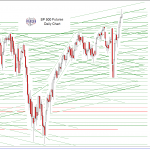Microcap stocks are notoriously hard nuts to crack. They are the part of the capitalization-weighted investment universe that is typically less liquid, transparent and profitable than large-cap choices. Investors do have some indicators they can use to estimate turning points in the microcap sector’s aggregate health. A small number of microcap ETFs help diversify away company-specific risk.
The NFIB’s Small Business Economic Trends (SBET) is one possible proxy for the sentiment of small business owner-investors. It combines data on both future plans and current results. The December 2015 report puts the Index of Small Business Optimism at 95.2, below the long-term average of 98. The small sample size and seasonal adjustments limit the index’s usefulness. The SBET also does not disclose the average revenue, net income, or asset quality of its sampled businesses, so investors cannot presume any strong equivalency with microcap stocks.
The Wells Fargo/Gallup Small Business Index is probably a more robust indicator than the NFIB SBET. Gallup’s index methodology also relies upon a small sample size but discloses a revenue range that could easily include the lower bound of the microcap sector’s revenues. The index is one more addition to an investor’s toolkit. BTW, this index also registered a decline in optimism in late 2015.
The Paychex IHS Small Business Jobs Index covers a vast sample size, so data quality here is less of a concern than with the previous two indexes. Measuring job growth helps investors determine whether small companies can afford to expand and handle higher sales volumes. Job gains at the end of 2015 were on a slight downward trend since early 2014, punctuated by some up months.
Dun and Bradstreet’s U.S. Economic Health Tracker covers a Small Business Health Index for payments and credit, with a large data set. The Tracker shows small business performance worsening so far this year, with weak payment performance. That makes two weak optimism indexes, a declining jobs index, and a weak payment/credit health index so far to start 2016.
Our macroeconomic data indicators for small businesses are not the only ways to understand microcaps. Investors need to know how different index providers assemble the microcap universe, because this ultimately determines ETF composition. The Boglehead wiki on US micro cap index returns compares several microcap indexes. The Wilshire index has the longest history, so performance data for products based on that index would be the most reliable.
Only a small number of ETFs cover the microcap sector. PowerShares Zacks Micro Cap ETF (PZI) with an expense ratio of 0.70%, and First Trust Dow Jones Select MicroCap ETF (FDM), with an expense ratio of 0.60%, are very thinly traded. Investors will face more difficulty with trade execution in thinly-traded securities. The Zacks product follows a proprietary index and the First Trust product follows a select index, so their returns are not directly comparable to those of ETFs that follow wider indexes.
The iShares Micro-Cap ETF (IWC), with an expense ratio of 0.60%, is more actively traded and has a larger market capitalization than PZI or FDM, and its construction from the Russell Microcap Index makes its methodology more reliable. Other details are less encouraging. It is currently heavily weighted toward the finance, health care, and information technology sectors. Those areas are all very much in bubble territory thanks to the Federal Reserve’s easy credit (finance), unsustainable Medicare payouts (health care) and VC-funded startup unicorns gorging on cloud services (IT). Consider also how the R-squared result for IWC (at its Yahoo Finance risk data) declined from 77.77 at the 10-year mark to 47.66 in the most recent three-year period. The more recent period’s performance thus has progressively less to do with the underlying index. That is a worrisome sign for an ETF that is supposed to stay very close to an index’s results.
Investors are welcome to track the above four macro indicators and relate them to the microcap sector’s leading products. Weakening indicators imply tougher times for small businesses. Leading index products that are increasingly divergent from their benchmarks (and more expensive than large-cap ETFs) are causes for concern.
The sad tales of microcap stock promotions gone wrong are always with us. The bad old days of investor relations conferences and seminars have given way to spam email stock scam promotions. Microcaps are easy prey for all manner of bad actors. The most broadly diversified instruments will at least give investors exposure to larger trends that can lift young, high-risk public companies to larger capitalizations.













Leave A Comment